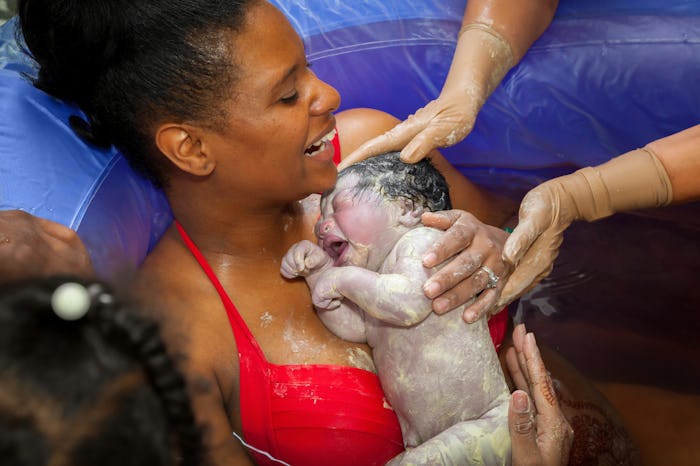Life

That White Gunk Covering Your Newborn Has A Name
There's a time (or four) in every expectant mother's life when she comes across a word associated with pregnancy and thinks to herself, "What the hell is that?" Just when you thought you've heard it all — mucus plug, bloody show, lanugo — a new word or phrase pops up that sends you straight to Google. As I was thumbing through a pregnancy book once, I stumbled on the word "vernix" as I was learning about my baby's development. "What is vernix," I wondered as I skipped whole paragraphs of info to find a definition. Thankfully, what it actually ends up being is way better than it sounds.
Often times medical terms sound more like characters from a science fiction movie than something to do with the human body. And it seems in the world of pregnancy, the odd-sounding phrases and words are plentiful. But vernix is actually a real cool way that your baby skin stays protected while she is developing. Around the twentieth week of gestation, your baby starts to produce a white pasty substance called vernix which aids in protection from the amniotic fluid in the womb, as the website for the American Pregnancy Association explained.
Often compared to the waxy coating on fruit, vernix plays an important role in keeping your baby's skin, well, baby soft. According to Healthline, if it wasn't for vernix, your baby's skin would become chapped and wrinkled, but more importantly, it shields baby from infection in the womb as well. Think of it as a soft, flexible coat of armor for the bun in your oven.
But the benefits of vernix aren't only for womb-dwellers; the benefits of not washing that waxy goodness off may cause you to push back your plans for baby's first bath. Even after birth, vernix is a natural moisturizer and cleanser, and protects against infection, as Today's Parent pointed out. Eventually, it will go away on it's own, so allowing the vernix to run its course may be beneficial to your little one.
However, there is an exception to letting the vernix soak in for too long. As Parents magazine pointed out, if you notice a yellow, brown, or green hue to the vernix, you'll want to wash it off your baby. This means that meconium (first poop) from the birth latched on to the vernix, altering the usual white color. Otherwise, let nature take it's course and make your baby's skin enviably soft and smooth.